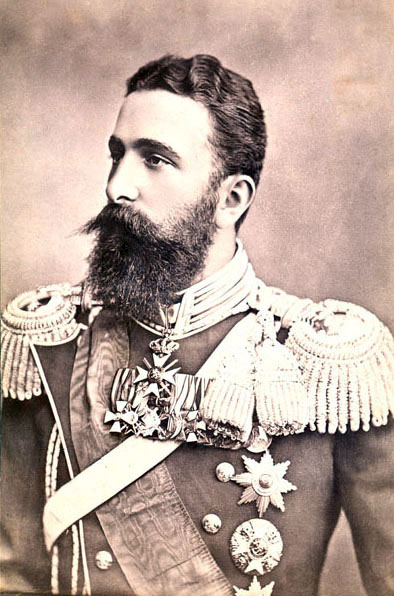
Alexander I, born Prince Alexander Joseph von Battenberg, was born on 5 April 1857 in Verona, Italy. He came from the House of Battenberg, which was the morganatic branch of the German princely family of Hesse, his father was Prince Henrik and his mother was Julia Hauke. In 1879, the Bulgarian National Assembly elected him the first prince of Bulgaria after the country became independent from the Ottoman Empire. Prince Alexander's reign was a period of consolidation and modernization of the Bulgarian state. He established the Bulgarian army and the Bulgarian Orthodox Church. He supported education and economic development. Prince Sándor's foreign policy was oriented towards Russia. This caused tension among Bulgarian nationalists who wanted closer ties with the Western powers. In 1885, the prince united Bulgaria with Eastern Rumelia, which caused further tension with the Ottoman Empire and the great powers. In 1886, Prince Sándor abdicated under Russian pressure. He moved to Austria, where he died in 1893, at the age of 36. He spent the last years of his life mainly in Graz, where he was the local commander of the Austrian army. Three years later, on February 6, 1889, he married an actress of bourgeois origin named Johanna Loisinger, who was eight years younger than the prince. After their wedding, the woman received the title of Countess of Hartenau, and since their son was morganatic, i.e. below the rank, their children could not bear the title of duke, but only the title of count after their birth. (It is a strange quirk of fate that Sándor's mother was also much below his husband in rank when they got married.) They had two children: Count Asen of Hartenau (1890-1965) Countess Tsvetana of Hartenau (1893-1935) Sándor died on October 23, 1893 in the year when his daughter was born. His resting place is the Battenberg Mausoleum in Sofia. His widow, Johanna, died in Vienna in 1951. Their daughter, Tsvetana, died already in 1935, Johanna rests next to her in Graz, Austria, where the prince died 42 years earlier. The prince's remains were brought back to Sofia, where the former monarch was given a public funeral and where he has been laid to rest ever since, in the mausoleum erected in his memory. Sándor was a very tall, handsome, charming and charmingly kind, dignified man, moreover, everyone in the know admitted that he was also an excellent soldier.I. The Bulgarian prince Alexander was a controversial figure. Some consider him a national hero who contributed to Bulgaria's independence and modernization. Others criticize his pro-Russian policies and believe that he has undermined Bulgaria's national interests.
The coins of the Bulgarian prince Alexander I between 1879 and 1886 represent one of the most important periods in Bulgarian monetary history. It was then that the first Bulgarian coins were put into circulation, which are seen as a symbol of the principality's independence and development. Minting was first started in 1879 at the Sofia Mint. The first coins issued were copper 10 and 20 stotinki and silver 1 and 2 leva. These coins were decorated with the portrait of the prince and the Bulgarian coat of arms. In 1880, the zloty currency was introduced, which was equal to 100 stotinki. The zloty was made of gold and was in circulation in denominations of 1, 2, 5 and 10 zlotys. In 1883, a copper coin with a denomination of 5 stotinki was also introduced. I. Alexander's coinage had a great impact on Bulgarian monetary history. These coins became an important part of Bulgarian national identity and are still held in high esteem by Bulgarians today. The reverse of the coins featured the Bulgarian coat of arms, which depicted a lion on a shield. The shield had four fields representing four important periods of Bulgarian history and culture.I. Alexander's coins represent one of the most beautiful and valuable periods of Bulgarian monetary history.
Numismatics. Online store for old money, coins and banknotes.